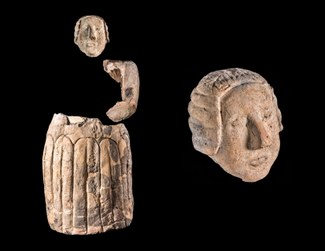Highlight - 2

“Priest” or “Priestess” (Standing Figure Wearing a Skirt)
Clay. Head: H. 12.1, W. 9.9, D. 10.0 cm, Arm: H. 14.0, W. 10.0, D. 9.0 cm,Lower Body: H. 33.0, W. 25.0, D. 14.0 cm
Tarxien Temples (Malta), Temple Period, 3600–2500 bce
Heritage Malta–National Museum of Archaeology: 9529
Courtesy of Heritage Malta, photography © Daniel Cilia
Recomposed from three fragments, this standing figure is the most complete of several comparable figures from the same context, and the largest known clay statuette from the Temple Period. The head is modeled with remarkable skill and with such individuality that it has been suggested the face was meant to represent a specific individual. The lower body is hollow, and the clay for the skirt was wrapped around a grass core. The skirt of this standing figure is longer and covers the feet, while others wear shorter garments that extend only to the calf or knee when standing, or to the knee when seated. Many skirts are decorated with incised vertical lines, which are usually interpreted as representing pleats, and thus the garment is often called a “pleated skirt.”